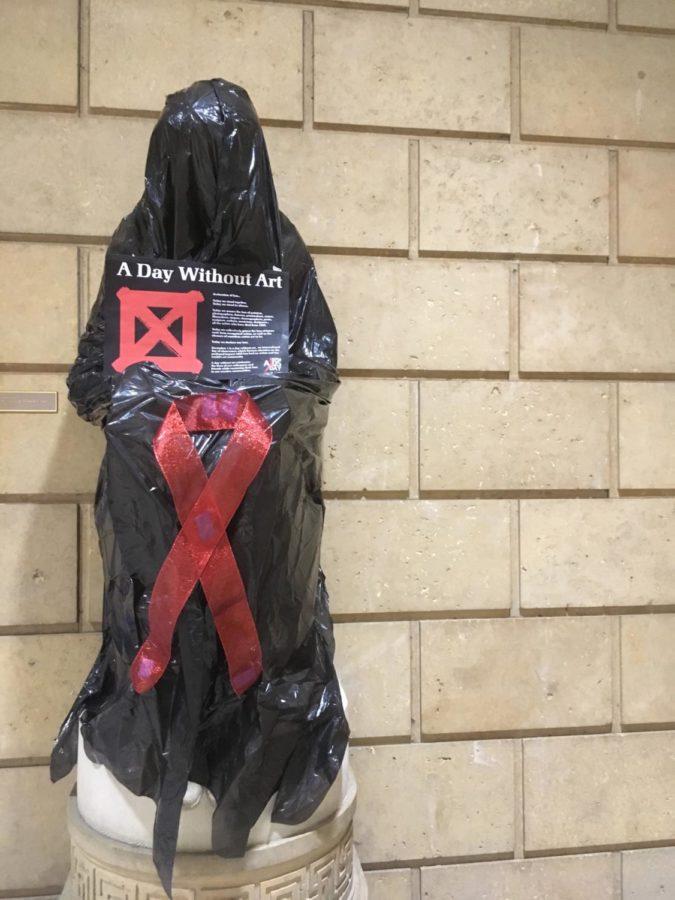“Day Without Art” sparks conversations about art lost to AIDS
December 1, 2017
As Friday morning dawned, a change had swept across the first floor of Parks Library. Instead of portraits of important Iowa State figures and sculptures of powerful draft horses, works of art were shrouded in black paper. The works aren’t under renovation. World AIDS Day was on Dec. 1, and an Iowa State group invited the public to imagine their world without art.
“’Day Without Art’ showcases basically what we could have lost if these artists had contracted AIDS and died because they hadn’t gotten treated,” said Adam Willman, senior in agronomy and global resource systems and president of the ISU Global Health and AIDS Coalition.
This is the second year the group has held the event on the Iowa State campus, with the first occurrence taking place in 2015. This year, the group added signs explaining the event and facts surrounding AIDS as well as red ribbons.
“That’s a very iconic image connected with AIDS,” Willman said.
Day Without Art was created in 1989 by Visual AIDS, a nonprofit organization in New York City dedicated to raising AIDS awareness and activism through art. The event doesn’t seek to raise money or funding; rather, it encourages people to get personally involved and invested in the fight against AIDS.
“We’re not asking for money or donations. We’re asking for action,” Willman said.
AIDS research is generated through two main funding mechanisms in the United States: PEPFAR (the President’s Emergency Plan for AIDS Relief), created by President George W. Bush in 2003, and the United Nations Global Fund to Fight AIDS, Tuberculosis, and Malaria. According to Willman, there is a push for Congress to increase funding by $700 million for the treatment of HIV, which, if left untreated, can develop into AIDS. Funding for initiatives like this has flat lined since 2013.
“If we can get people to even stop and think and remember that today is World AIDS Day, then that’s a win for us,” Willman said.
Willman became passionate about the fight against AIDS when he learned that medical technology was available to reduce the rate of infection with AIDS around the world.
“It’s been pretty empowering, seeing people stopping and engaging in conversation,” Willman said. “We have all the capacity to end AIDS, and the only thing stopping this is funding.”
Though Willman is a senior and will graduate before the next “Day Without Art,” he hopes the event will continue to grow in future years at Iowa State.
“It would be nice to do it every single year,” Willman said. “Once we get that message out and people start to follow along, that’s where the real change begins.”















